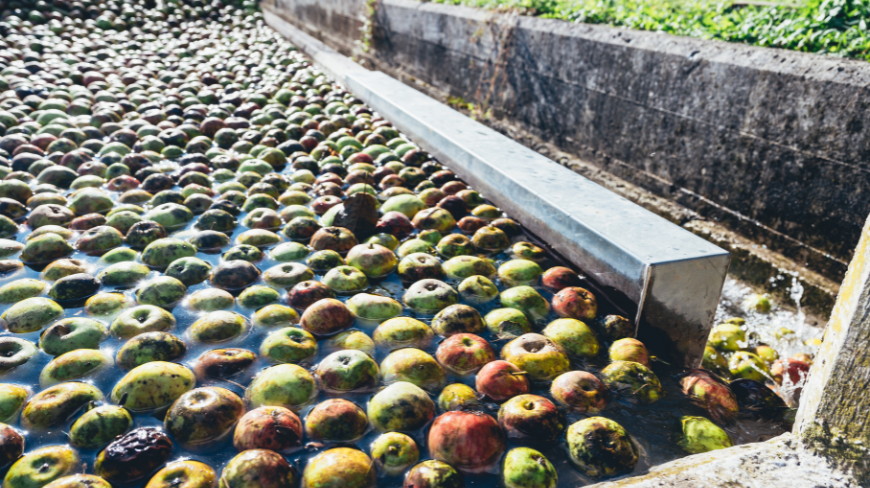What is the elaboration process for the Basque cider?
Cider harvest begins around late September up to early October, with the collecting and selection of the apple. The gathering and reception of the apple doesn’t end up to halfway through November, which is when they receive the later apple varieties.

With the apple in the cider house, we begin the transformation of the prime material into the so precious liquid through the smashing and its later pressing. The obtained juice from the pressing machine is deposited in barrels, which will end in cider after the fermentation processes.
Finally, the cider will be tasted from the barrel in txotx season from January up to late April and in bottle throughout the year.
Apple picking
The biggest part is collected manually in Gipuzkoa, with the help of a tool called “kizkia”, which serves to collect the fruit one by one. We must make a gathering in the optimal spot for aging, for that before starting it is convenient analyzing the state of aging. The gathering period extends from late September or early October, up to half November, according to the apple variety. The harvest of apples suffer of "veceria", in which one year of good harvest is followed by a bad one. Today we’re implanting techniques to be able to regulate these harvests and have regular apple productions.

Crashing and pressing
The selected and clean apple is transferred to the crashing machine that has the function of breaking the apples into small pieces and easing the pressing. The crushed apple is transported to the pressing machine. The majority of cider houses have installed modern pressing machines that ease a lot the work of the producer and saves time. From the pressing we obtain the appreciated apple juice which after two natural fermentations becomes into cider. Depending on the apple variety and its aging point, the pneumatic press takes around 50-70% of its juice.

Apple juice and fermentation
The pressed juice obtained from the pressing machines is transported to the barrels and so to begin the fermentation. The used deposits are differents, they can be made of wood or stainless steel mainly. During approximately the next 2-4 weeks the juice will go through its first fermentation, alcoholic fermentation, in which sugar is turned into alcohol. Once done, the malolactic transformation begins, in which the malic acid turns into lactic acid.

Bottling
After the two natural fermentations, it’s the owner of the cider house who will determine the appropriate moment for bottling the cider. They can keep the cider in the barrels thanks to the cold systems installed in cider houses. The used technology for bottling the cider has evolved a lot in the last decades; cider houses have incorporated bottling facilities of leading technology.

Product tasting
The new cider is tasted in the "txotx" style, directly from the barrels. The origin of this tasting ritual was to choose the cider that was going to be bought by the owners of bars and restaurants that nowadays has become an unprecedented culinary tradition. Depending on the time of the year and how we taste the cider, we will turn the cider tasting into a totally different experience, and here lies the magic of our natural Basque cider that depending on how it is served, it will show different aromas, nuances and flavors for each occasion.

If you want to discover all the details of cider’s elaboration, don’t hesitate to visit a Basque cider house and enjoy of their cider and gastronomy.



Comentarios
Deje su comentario